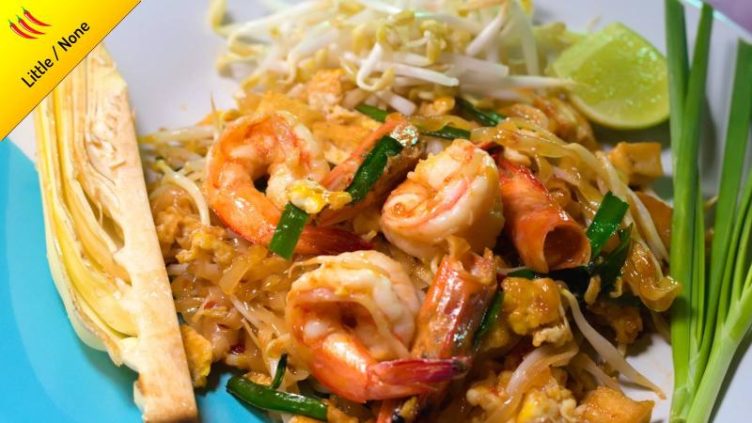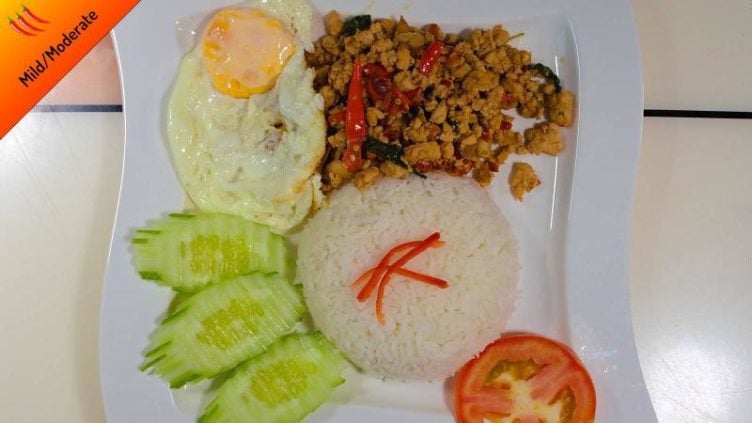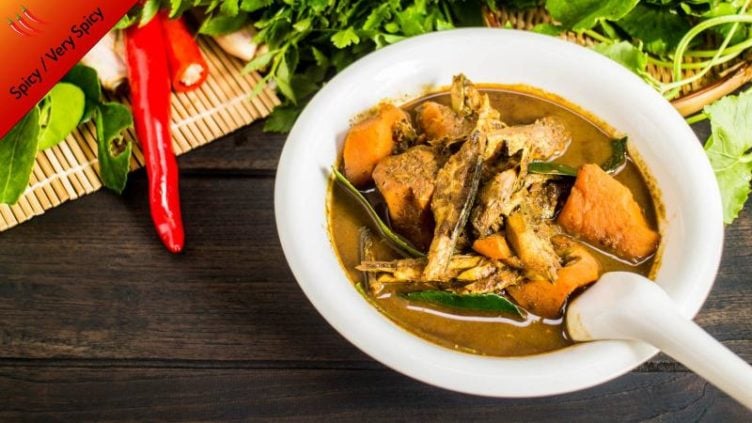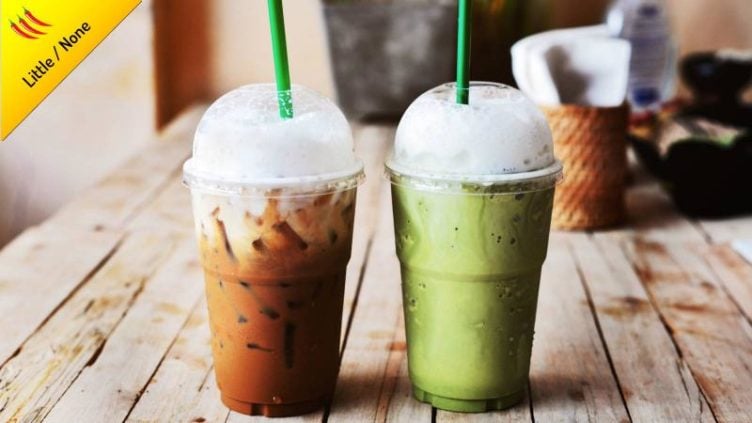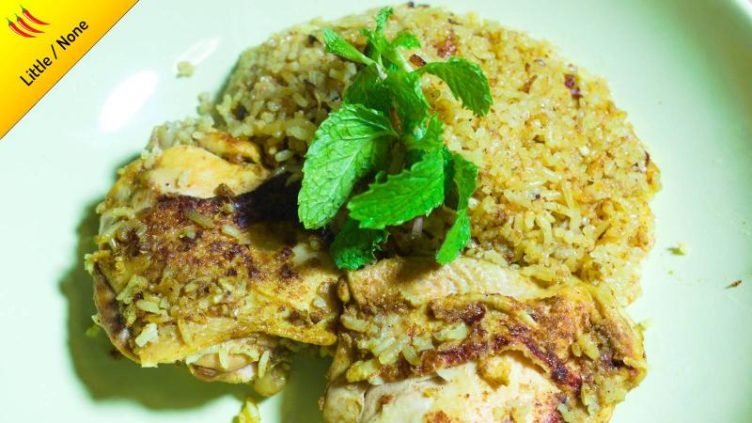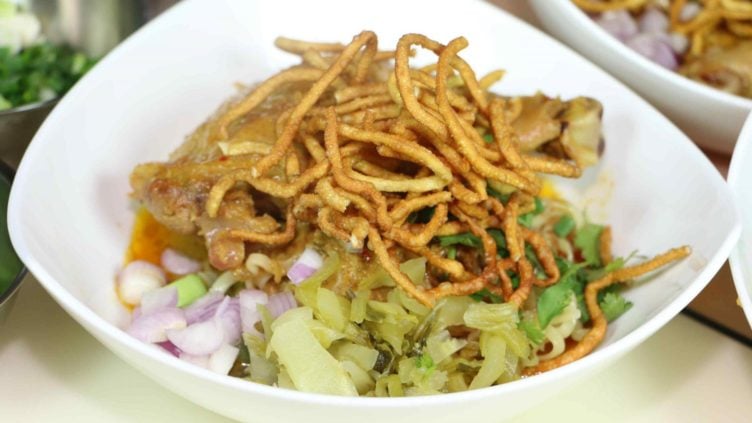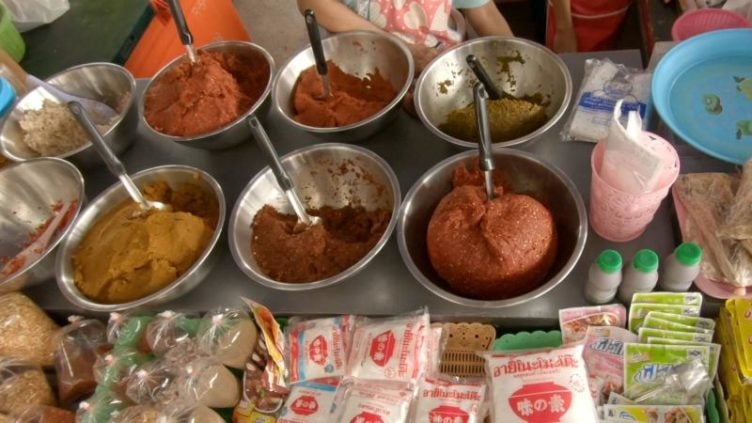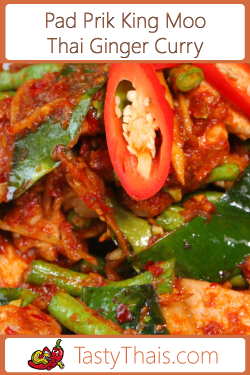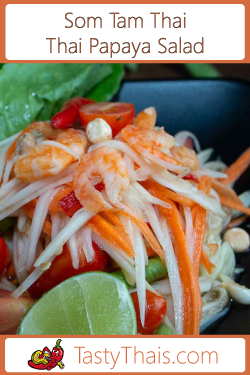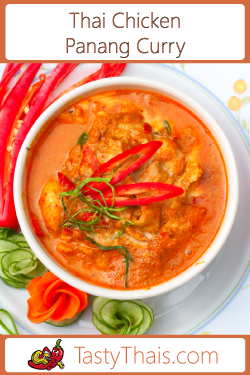Is all Thai food spicy? Not really!
Thai food has developed over the centuries, adjusting to influences from traders such as the Portuguese and Chinese and immigrants from the surrounding nations, many of which have spicy food as a central feature, particularly Indian and Malay influences. (Funnily enough, it was the Portuguese traders that introduced chilies to Thailand, bringing them from South America.)
As a result, Thai food encompasses many food styles from the quick, single plate meals of Thai street food to the more opulent large spreads for social groups eating at a Thai restaurant which comprise many dishes representing a broad range of highly spiced cuisines originating in Thailand and the region as a whole.
Thai food in any particular place is also very much influenced by the regional dishes and preferences of the locals.
Before refrigeration, it was difficult to keep food from spoiling in the hot climates of Thailand and its neighboring countries. Indians use spices to preserve meats and fish and Thais used marinades for the same purpose.
Similar processes are found in all the countries of the region which define the culture of their cuisine.
All of these processes involve marinades or spices, many including hot chili which is the definition of the heat that spicy translates to in your mouth.
Spice can also be used to mask the taste of food that is no longer fresh – a big deal if you have no refrigeration but less so in today’s age where refrigeration and ice are readily available.
Is all Thai Food Spicy?
Even though Thai food is renowned for its spicy to very spicy tastes, it is a fallacy to think that all Thai food is spicy. There are many dishes from snacks to starters and main courses to sweets that are not (or need not be) spicy at all such as roasted cashews, spring rolls, tod man koong (fried shrimp patties), khao man gai (tasty boiled chicken with rice), and mango & sticky rice.
In fact, there is a whole range of dishes that are not spicy or that can be spiced up or down to suit.
We should clarify that we are talking about spices with heat which predominantly comes from chili in Thai food, rather than other spices that influence taste with little heat such as cumin, ginger (although that can be quite hot), or seasoning sauces. (You can learn more and grab a shopping list of essential Thai food ingredients via that link.
For example, a common dish is Pad Thai, (Stir-Fried Noodles) which include vegetables and tofu and is found everywhere. A lot of the spice is added at the table to suit individual taste, so the basic dish as served is usually not over spicy.
Even though Thai people are used to spice, individuals vary widely in how much spice they prefer. So it is very normal for Thais to specify how spicy they want their food. If you are visiting Thailand it is a very good idea to learn those basic instructions.
How to Order Different Levels of Chili Heat in Thailand
There is not much point in trying to learn how to read Thai but it can be useful to show the Thai wording if you are having difficulty with pronunciation. If you get the tone of the word wrong a Thai will likely simply be unable to work out your almost right pronunciation as a Westerner might be readily able to do if a Thai were in the reverse situation trying to pronounce an English word.
So if you want your food to be very low in spicy heat you order the dish by saying the name of the dish followed by “mai phed” (ไม่เผ็ด), which means not spicy (hot) – but don’t expect the chili to be missing altogether.
For example to order pad grapao gai (stir fried basil with chicken) you would say: Kor – Pad – Grapao – Gai – Mai – Phed – Khrup(man speaking)/Ka(girl speaking)
Word for Word in English: I’d like – stir fried – basil – chicken – not -spicy – please
Correctly written in Thai: ขอผัดกระเพราไก่ไม่เผ็ดครับ(ค่ะ) – the “mai phed” is bolded
If you want it medium spicy (hot) for a western tongue unused to much chili heat add “phed nit noy” (เผ็ดนิดหน่อย) – which means spicy a little bit – after the dish – so the same dish above in Thai would then be:
ขอผัดกระเพราไก่เผ็ดนิดหน่อยครับ(ค่ะ) – the “phed nit noy” is bolded.
If you want it to be spicy as a Thai would eat it then ask for the dish to be “phed bpokati” เผ็ดปกติ – which means spicy as is normal (for Thailand) – which in Thai would be:
ขอผัดกระเพราไก่เผ็ดปกติครับ(ค่ะ) – “phed bpokati” is bolded
If you really want to extend yourself and set your mouth on fire then you can order “phed mak mak” เผ็ดมากๆ which means “very spicy” – which in Thai would be:
ขอผัดกระเพราไก่เผ็ดมากๆครับ(ค่ะ)
What is the Spiciest Thai Curry?
There are many spicy Thai dishes but the spiciest Thai curry dish you are likely to find on a menu is Kaeng Tai Pla (Thai Fish Innards Curry) shown above but Khua Kling Gai and Kaeng Luang Pla can sometimes be practically as spicy. These southern Thailand dishes are traditionally very very spicy. Fish seems to absorb the chili more than other meats and is expected to be extremely spicy but the dry curry style of Khua Kling somehow binds to your tongue even more which makes the chili heat cling to your mouth.
Another very spicy dishes is Pad Prik King (recipe) (a dish with fried chili and ginger) and a number of other dry curry dishes are typically very spicy.
Other dishes such as Larb, Gaeng Som, Tom Yum and many more, are traditionally spicy but not excessively so. Som Tam Thai (recipe), spicy green papaya salad and its variations is another dish that can vary from medium to super spicy depending on the maker.
The problem with generalizing about spicy Thai food is that different chefs will add varying levels of chili to their dishes as there is no chili thermometer yet invented to standardize chili heat.
So some restaurants will serve very spicy food unless requested to tone it done when ordering and some will serve less spicy food unless you ask to increase the spiciness.
Thai dry curries are definitely the spiciest Thai food ordinarily.
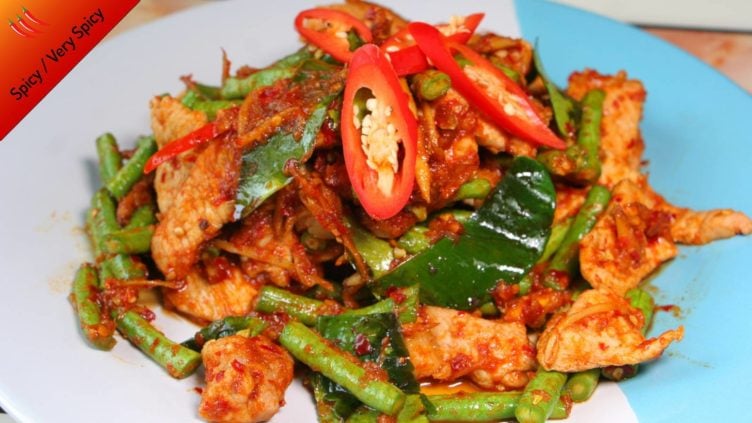
How to Stop Chili Burn in Your Mouth
Chili is a very hot pepper and to stop the burn in your mouth after a mouthful of too much chili you need to absorb the oil which sets off your taste bud pain receptors. The best way is to eat rice or bread or better still drink or eat something dairy – the creamier the better.
Thai Tea is a great option because it contains condensed milk and quite a lot more in quantity than you would put milk in ordinary tea. It is also very sweet which helps to counter the heat and has plenty of ice which you can suck on to numb the pain.
You can read a whole lot on what makes chilies hot but the short version is here.
The hotness from chili and other peppers comes from the oil contained in them. The oil molecules attach themselves to your taste buds and fire the pain response that something hot is in your mouth.
A common response is to immediately drink cold water or beer thinking it will wash away the pain-causing substances out of your mouth. It won’t work because the pepper oil will stick to your taste bud much more readily than washing off.
If you’ve ever tried to remove oil from your windscreen with water you will understand the mechanics of the process. You can add detergent to help clean your windscreen but that is not a palatable solution for your mouth!
The molecules of dairy, bread, and rice are very good at dragging away those pain-causing molecules of capsaicin off your taste buds thus quenching the fire on your tongue as well as your thirst. Capsaicin is the substance in pepper that is the cause of all that firey pain.
So, if you inadvertently bit off more chili than you could chew, grab yourself a mouthful of rice to push around your mouth to absorb the oil or eat some dairy.
Now you know why Indians have raita!
What is the Least Spicy Food in Thailand?
There are some dishes that are not spicy at all such as mango with sticky rice or grilled pork skewers so these are the least spicy. Main courses do tend to have some spice but the least spicy main courses are barbeque baked foods, coconut milk curries, noodle dishes, fried rice, and other rice-based dishes.
Tom Kha Gai and its variations are the mildly spiced coconut milk curries that came out of the Royal kitchens and originate in the Bangkok area.
Khao Man Gai is a rice-based dish where chicken is boiled and rice is then cooked in the liquid used for cooking the chicken along with a little added soy sauce and other ingredients. This dish is very mild with spices personally added from sauce and condiments at the table.
Khao Mok Gai (recipe) is a Thai version of chicken biriyani which is not spicy in a hot sense either.
Pla Op Glua or Pla Pao Glua is whole fish baked in salt and again any spice comes from sauces and condiments you add yourself at the table.
Nua Dad Diow or Moo Dad Diow are sun-dried beef or sun-dried pork which is then fried and served with crispy lime leaves and is not spicy.
Ba Mee Giew Koong which is yellow egg noodle soup with prawn wanton dumplings which is another dish spiced at the table.
These are just examples and there are many more.
But the easiest way to avoid food that is too spicy is just to make sure your server understands you want your food “mai phed“.
Khao Soi (recipe), a wonderful curry originating in Chiang Mai is usually not too spicy. Massaman Curry and Green Curry can be spicy or not depending on the chef, or if making it at home, the quantity used and level of spice in the paste.
So if ordering at a restaurant, it is best to be sure to clarify that you want it mildly spiced if that is the case.
How to Adjust Spiciness in Home Cooked Recipes?
If you are trying out home-cooked Thai food recipes – hopefully, you are trying some of mine – then getting the spice level right can be a bit difficult.
One problem is the hotness of the chili you are using as different chili varieties vary greatly in spiciness. This issue is made worse by the fact that adding chili after cooking is just not the same taste as cooking the chili with the other ingredients.
I think the best solution is to, first, find a chili variety that you can readily get hold of and try to buy the same sort each time. Secondly, when you cook a recipe, reduce the number of chilis stated if you are not used to spicy food.
As for sauces and pastes, the same thing applies really as pastes can be rough or fine and very spicy or less so depending on the brand and sauces have different tastes too. So either buy a consistent brand of paste or make your own at home to make sure you have a consistent level of spiciness in your pastes.
By the way, if you are vegan or vegetarian then you should definitely make your own substitute for fish sauce as it is in so many Thai recipes and very hard to find in the stores or online.
My recipes are generally moderately spiced for the Thai palette but your experience may be that the recipe is too spicy.
Your taste and response to spice will adapt greatly with the quantity of spicy food you eat. The more spicy food you eat, the less sensitive your taste buds will be to hot spice.
If you cook the dish but find it too mild then you can add spice with a little dried chili flakes and note to increase the amount of chili when you cook the dish next time.
I strongly suggest that you print out my recipes and note the spiciness and any adjustment you want to make next time right on the recipe sheet. Then file it away and next time you will know exactly what you need to do to spice up your (culinary) life.
Other Recipes You Might Enjoy:
